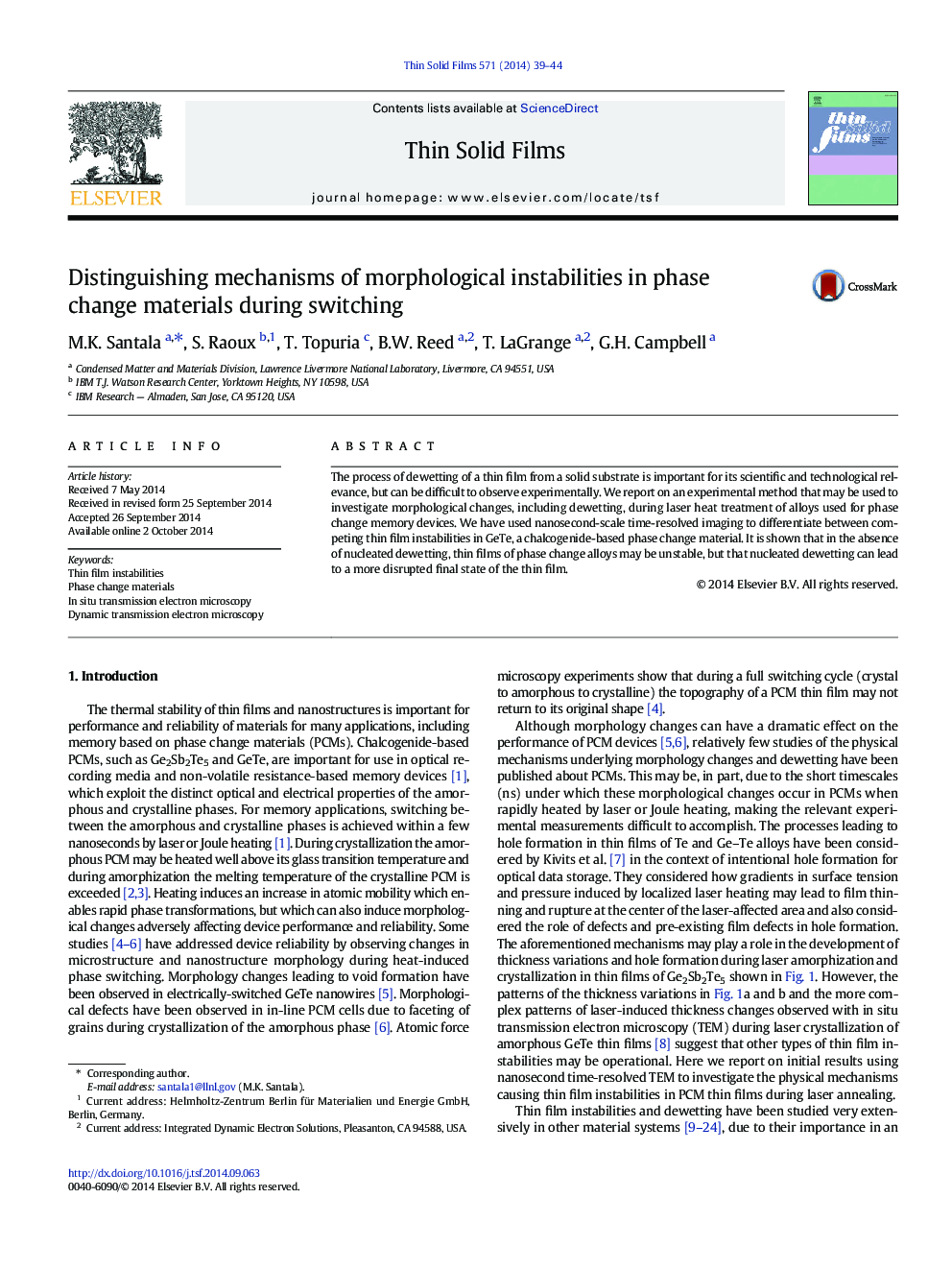| Article ID | Journal | Published Year | Pages | File Type |
|---|---|---|---|---|
| 1665108 | Thin Solid Films | 2014 | 6 Pages |
•Thin film instabilities may form in phase change materials during laser switching.•Instabilities begin to form in nanoseconds and may be nucleated or inherently unstable.•We use nanosecond-scale TEM to differentiate instability mechanisms in GeTe.•Mechanical instabilities in thin capping layers are important in dewetting.•Nucleated dewetting leads to a more disrupted final state of the thin film.
The process of dewetting of a thin film from a solid substrate is important for its scientific and technological relevance, but can be difficult to observe experimentally. We report on an experimental method that may be used to investigate morphological changes, including dewetting, during laser heat treatment of alloys used for phase change memory devices. We have used nanosecond-scale time-resolved imaging to differentiate between competing thin film instabilities in GeTe, a chalcogenide-based phase change material. It is shown that in the absence of nucleated dewetting, thin films of phase change alloys may be unstable, but that nucleated dewetting can lead to a more disrupted final state of the thin film.
